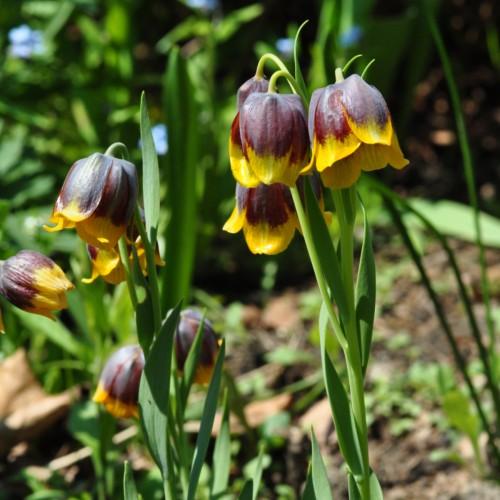
fritillary
Fritillaria michailovskyi
Cycle:
Perennial
Watering:
Average
Hardiness Zone:
5 - 8
Flowers:
Flowers In Spring
Sun:
Full sun, Part sun/part shade
Soil:
Humus rich, Well-drained
Fruits:
Fruits In Spring Ready In Summer
Leaf:
Yes
Growth Rate:
High
Maintenance:
Low
Drought Tolerant:
Yes
Salt Tolerant:
Yes
Care Level:
Medium
watering
Fritillaria michailovskyi requires regular watering, but not too much. During the summer months, it should be given a good amount of water (about 1-2 inches per week), but should never be left in standing water. During autumn and winter months, water should only be given when the soil is dry to the touch, about once or twice a month. Plants grown in containers should also be watered less frequently as the soil drains faster than in the ground. Over-watering can be detrimental to the health of the plant, so ensure adequate drainage and never leave the plant sitting with wet soil.
sunlight
Fritillary (Fritillaria michailovskyi) plants typically perform best when they receive bright, indirect light for the majority of the day. During the spring and summer, these plants should receive 6-8 hours of sunlight per day. Exposing Fritillary to sunlight for more than 8 hours may result in sunburn or bleaching of the leaves, so plants should be kept in the sun's most indirect rays. When the temperatures are cooler in autumn and winter, Fritillary should still receive at least 4-5 hours of bright, indirect sunlight. During these seasons, plants may exhibit drought-like symptoms when not given enough water.
pruning
Fritillaria michailovskyi can be pruned in late fall to mid-winter. Pruning should involve removal of any dead, damaged or diseased growth. The flowering stems should be cut back to ground level, and it may also be beneficial to lightly prune back the leaves to improve air circulation. Make sure not to prune too heavily, however, as this can reduce the flowering potential for subsequent seasons.
